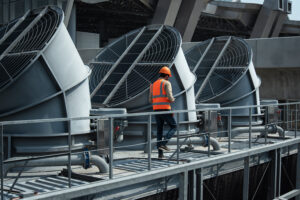 Taking time to understand the basic concepts behind managing heat waste can help you plan solutions for your company. By learning if your systems are up to date or could use improvement, you help prevent halts in production that come with overheating. While some of the terms may be new to you, their application is vital to helping you control the temperatures of your equipment.
Taking time to understand the basic concepts behind managing heat waste can help you plan solutions for your company. By learning if your systems are up to date or could use improvement, you help prevent halts in production that come with overheating. While some of the terms may be new to you, their application is vital to helping you control the temperatures of your equipment.
At Noren Thermal Solutions, we have over fifty years of experience helping companies like yours transfer heat waste away from their productions. We rely upon the three different forms of thermal transfer to help you find the solution that is most efficient for your business. Take the time to understand these processes and plan a management system that works for you!
Conduction Helps You Move Heat Between Objects That Touch
Conduction is the process by which heat moves between molecules that touch one another. You may be familiar with this type of heat transfer and how it applies to solids and liquids. Because gases have more space between their molecules, heat transfers between them in a different form.
Different materials have different degrees of conductivity, and taking advantage of this property allows us to design products that more effectively move your heat waste. For example, metals offer a high degree of transfer. This is why we design heat sinks made from copper to help you move your heat. Competitors may offer a cheaper solution with aluminum, but copper offers far more conductivity.
Fluids And Gas Move Energy With The Aid Of Convection
Convection is a form of heat transfer where a heated material flows away from its source. Directing the travel of this material can help you move temperatures from one area to another. Because solids rely upon the transfer of energy at the molecular level, they do not enjoy this transform form like fluids and gases do.
Depending upon the application used, convection can happen on its own or become forced. When convection is free, it relates to changes in buoyancy or the change between liquids and gases. Heat pipes provide a practical example that transfer heat by boiling a liquid into a gas that travels away from the source location. When the gas cools away from the source, it turns back to liquid and returns to the source to begin the process once again. An example of forced convection is movement caused by an external force, such as a fan.
Understanding The Science With Noren Thermal Solutions
Talk to a member of the team at Noren Thermal Solutions to learn more about how we can help you manage your waste heat. We can evaluate your current needs to help you build a custom solution for the future!







